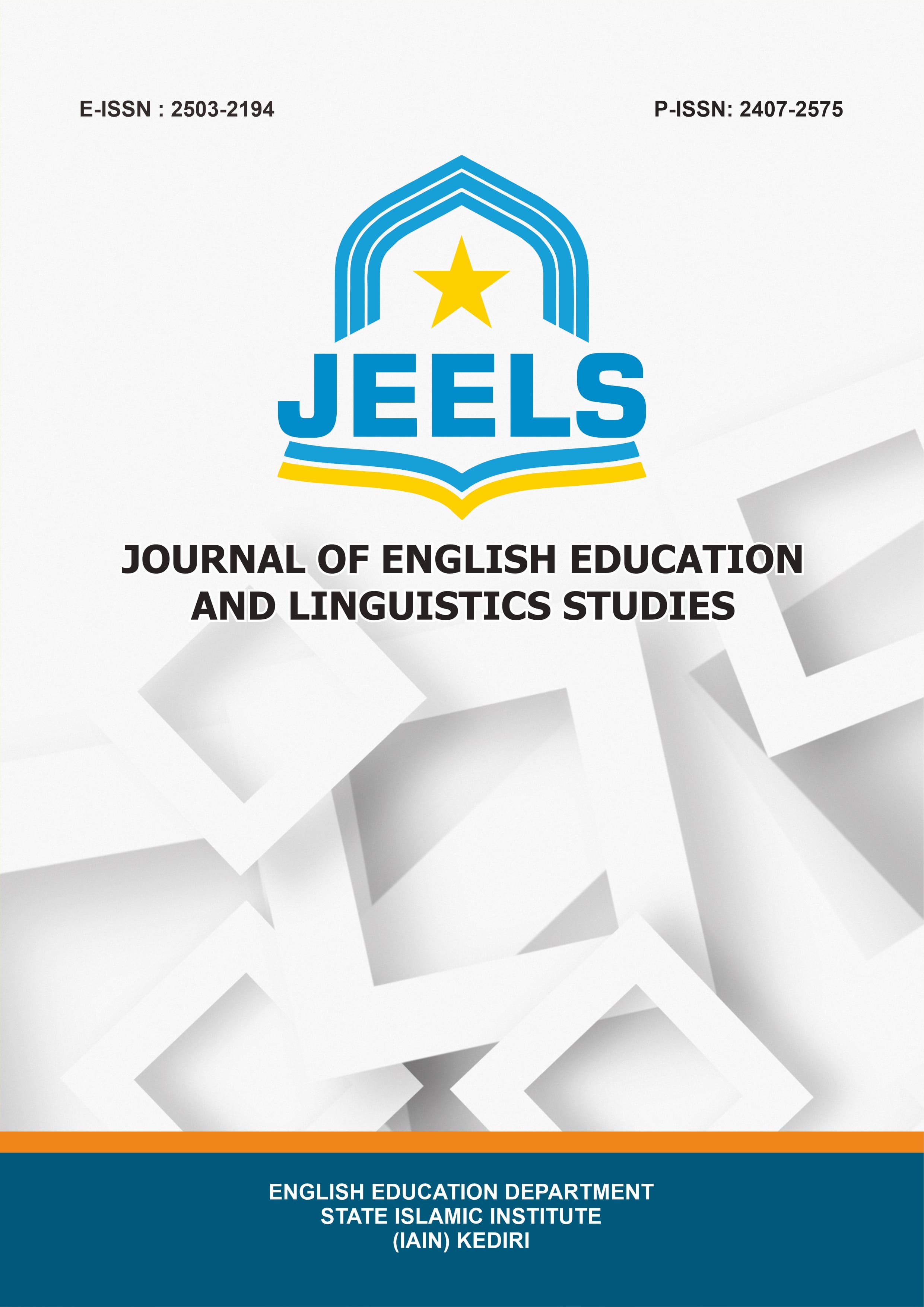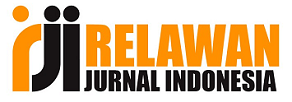Exploring Studies on Multimodal Literacy in English Learning: A Bibliometric Analysis
DOI:
https://doi.org/10.30762/jeels.v11i2.3681Keywords:
Bibliometric, Biblioshiny, English learning, Multimodality, Multimodal literacyAbstract
This study focuses on analyzing the productivity of research in multimodal literacy in English learning by using bibliometric analysis. A total of 345 articles from the Scopus database were retrieved using keyword searches. The bibliometric data were analyzed using Biblioshiny in R and VOSviewer to analyze the most prolific authors, the total number of publications and citations, the publication productivity of each country and the total number of citations per country, the number of publications from affiliations, the number of publications from sources, and the keywords that often appear as material for trend analysis. The results of this study show that Jiang L is the researcher with the biggest number of publications in this field among the most prolific authors. The countries with the most publications and citations are the USA and China. Nanyang Technological University, Michigan State University, and Griffith University are the three highest affiliations that produce publications in this field. In the keyword analysis, it was found that multimodality, literacy, multiliteracies, and digital/media literacies are popular keywords that determine trends and are connected to new keywords such as writing, instructional strategies, digital multimodal composing, ELL, critical thinking, challenges, curriculum design, drawing, apps, popular cultures and instructional strategies that are emerging in this field.
Downloads
References
Alvermann, D. E., & Harrison, C. (2017). Move over, reading: Writing matters! Journal of Adolescent & Adult Literacy, 60(5), 589–591. http://www.jstor.org/stable/26630452
Aria, M., & Cuccurullo, C. (2017). Bibliometrix: An R-tool for comprehensive science mapping analysis. Journal of Informetrics, 11(4), 959–975. https://doi.org/10.1016/j.joi.2017.08.007
Cárcamo, M. M. A., Cartes, R. A. C., Velásquez, N. E. E., & Larenas, C. H. D. (2016). The impact of multimodal instruction on the acquisition of vocabulary. Trabalhos Em Linguística Aplicada, 55(1), 129–154. https://doi.org/10.1590/010318134842170942
Cope, B., & Kalantzis, M. (2009). “Multiliteracies”: New literacies, new learning. Pedagogies: An International Journal, 4(3), 164–195. https://doi.org/10.1080/15544800903076044
Cope, B., & Kalantzis, M. (2021) ‘Pedagogies for Digital Learning’, Multimodal Literacies Across Digital Learning Contexts, pp. 34–54. doi:10.4324/9781003134244-3.
Cuccurullo, C., Aria, M., & Sarto, F. (2016). Foundations and trends in performance management. A twenty-five years bibliometric analysis in business and public administration domains. Scientometrics, 108(2), 595–611. https://doi.org/10.1007/s11192-016-1948-8
Ding, X., & Yang, Z. (2020). Knowledge mapping of platform research: a visual analysis using VOSviewer and CiteSpace. Electronic Commerce Research, 22(3), 787–809. https://doi.org/10.1007/s10660-020-09410-7
Ekşi, G., & Yakışık, B. Y. (2015). An investigation of prospective English language teachers’ multimodal literacy. Procedia - Social and Behavioral Sciences, 199, 464–471. https://doi.org/10.1016/j.sbspro.2015.07.533
Firmansyah, M. B., Andriyani, A. a. a. D., & Asih, R. A. (2023). Bibliometric analysis of multimodality based on multimodal learning. SSRN Electronic Journal. https://doi.org/10.2139/ssrn.4298216
Ganapathy, M. (2016). The effects of using multi-modal approaches in meaning making of 21st century literacy texts among ESL students in a private school in Malaysia. Advances in Language and Literary Studies, 7(2), 143-155.
Gao, Y., Wong, S. L., Md. Khambari, M. N., & Noordin, N. (2022). A bibliometric analysis of online faculty professional development in higher education. Research and Practice in Technology Enhanced Learning, 17(1), 17. https://doi.org/10.1186/s41039-022-00196-w
Haryyadi, J, C, A. & Rohmah, Z. (2023). Pre-service teachers’ perceptions towards the implementation of multimodal texts in microteaching classes. Bahasa dan Seni: Jurnal Bahasa, Sastra, Seni, dan Pengajarannya, 51(2), 255–269. https://dx.doi.org/10.17977/um015v51i22023p255
Jayanti, E. & Damayanti, I. (2023). Exploring teachers’ perceptions of integrating multimodal literacy into English classrooms in Indonesian primary education. Child Education Journal. 5 (2), 98-109. 10.33086/cej.v5i2.5240.
Jewitt, C. (2008). Multimodality and literacy in school classrooms. Review of Research in Education, 32 (1), 241-267. https://doi.org/10.3102/0091732X07310586
Julia, J., Afrianti , N., Soomro, K. A., Supriyadi, T., Dolifah, D., Isrokatun, I., Erhamwilda, E. & Ningrum, D. (2020). Flipped classroom educational model (2010-2019): A bibliometric study. European Journal of Educational Research, 9(4), 1377-1392. https://doi.org/10.12973/eu-jer.9.4.1377
Kress, G. (2010). Multimodality: A social semiotic approach to contemporary communication. Routledge.
Kulju, P., Kupiainen, R., Wiseman, A. M., Jyrkiäinen, A., Koskinen-Sinisalo, K., & Mäkinen, M. (2018). A review of multiliteracies pedagogy in primary classrooms. Language and Literacy, 20(2), 80–101. https://doi.org/10.20360/langandlit29333
Kustini, S., Suherdi, D., & Musthafa, B. (2020). Beyond traditional literacies: A multimodal-based instruction to fostering student digital literacy learning. Jurnal Pendidikan Bahasa Dan Sastra, 20(1), 37–47. https://doi.org/10.17509/bs_jpbsp.v20i1.25969
Lauder, A. (2008). The status and function of English in Indonesia: A review of key factors. Makara, Social Humanities, 12(1), 9-20. https://doi.org/10.7454/mssh.v12i1.128
Lim, F. V., Toh, W., & Nguyen, T. T. H. (2022). Multimodality in the English language classroom: A systematic review of literature. Linguistics and Education, 69, 101048. https://doi.org/10.1016/j.linged.2022.101048
Lim, F. V. (2022). Thinking and talking about digital news in the Singapore secondary English classroom: A pilot study. English Teaching & Learning, 48(1), 97–116. https://doi.org/10.1007/s42321-022-00134-5
Liu, Z. (2022). Mapping the research trends of third language acquisition: A bibliometric analysis based on Scopus. Frontiers in Psychology, 13. https://doi.org/10.3389/fpsyg.2022.1021517
Liu, Z., Yin, Y., Liu, W., & Dunford, M. (2015). Visualizing the intellectual structure and evolution of innovation systems research: A bibliometric analysis. Scientometrics, 103(1), 135–158. https://doi.org/10.1007/s11192-014-1517-y
Love, K. Mediating generational shift in secondary English teaching in Australia: The case study of ''Built''. L1-Educational Studies in Language and Literature 3, 21–51 (2003). https://doi.org/10.1023/A:1024536207337
Mishra, M., Dash, M. K., Sudarsan, D., Santos, C. A. G., Mishra, S. K., Kar, D., Bhat, I. A., Panda, B. K., Sethy, M., & Silva, R. M. D. (2022). Assessment of trend and current pattern of open educational resources: A bibliometric analysis. The Journal of Academic Librarianship, 48(3), 102520. https://doi.org/10.1016/j.acalib.2022.102520
Morita-Mullaney, T. (2021). Multilingual multiliteracies of Emergent Bilingual families: Transforming teacher’s perspectives on the “literacies” of family engagement. Theory Into Practice, 60(1), 83–93. https://doi.org/10.1080/00405841.2020.1829382
Peng, J., Mansor, N. S., Ang, L. H., & Kasim, Z. M. (2022). Visualising the knowledge domain of linguistic landscape research: A scientometric review (1994-2021). World Journal of English Language, 12(5), 340. https://doi.org/10.5430/wjel.v12n5p340
Pranckutė, R. (2021). Web of science (wos) and scopus: The titans of bibliographic information in today’s academic world. Publications, 9(1), 12. https://doi.org/10.3390/publications9010012
Rohmah, Z., Basthomi, Y., & Sholihah, D. N. (2024). Muslim majority yet without preference for arabic: Mapping linguistic landscape studies in Indonesia. Indonesian Journal of Applied Linguistics, 13(3), 600–610. https://doi.org/10.17509/ijal.v13i3.66953
Sidiq, M. (2019). Panduan analisis bibliometrik sederhana. Researchgate, 1–29. https://doi.org/10.13140/RG.2.2.15688.37125
Supinah, R., & Soebagyo, J. (2022). Analisis bibliometrik terhadap tren penggunaan ICT pada pembelajaran matematika. JNPM (Jurnal Nasional Pendidikan Matematika), 6(2), 276. https://doi.org/10.33603/jnpm.v6i2.6153
Sutrisno. D., Abidin. N.A.Z., P., Pambudi. N., Adyawati., Sallu. S (2023). Exploring the benefits of multimodal literacy in English teaching: Engaging students through visual, auditory, and digital modes. Global Synthesis in Education Journal, (2), 1-10. https://doi.org/10.61667/xh184f41
The New London Group. (1996). A pedagogy of multiliteracies: Designing social futures. Harvard Educational Review, 66(1), 60–93. https://doi.org/10.17763/haer.66.1.17370n67v22j160u
Tour, E., & Barnes, M. (2021). Engaging English language learners in digital multimodal composing: Pre-service teachers’ perspectives and experiences. Language and Education, 36(3), 243–258. https://doi.org/10.1080/09500782.2021.1912083
Trisanti, N., Sukyadi, D., & Suherdi, D. (2022). Digital Multimodal Composing Usage in EFL Secondary Classroom: A Study of In-Service EFL Teachers’ Perception. In N. Haristiani, Y. Yulianeta, Y. Wirza, W. Gunawan, A. A. Danuwijaya, E. Kurniawan, D. Darmawangsa, S. Suharno, N. Nafisah, E. D. A. Imperiani, A. H. Lubis, B. Hermawan, & E. R. Fauzy (Eds.), Proceedings of the Sixth International Conference on Language, Literature, Culture, and Education (ICOLLITE 2022) (pp. 375–382). Atlantis Press SARL. https://doi.org/10.2991/978-2-494069-91-6_59
Unsworth, L. (2001). Teaching multiliteracies across the curriculum: Changing contexts of text and image in classroom practice. Open University.
Viana-Lora, A., & Nel-lo-Andreu, M. G. (2022). Bibliometric analysis of trends in COVID-19 and tourism. Humanities and Social Sciences Communications, 9(1), 173. https://doi.org/10.1057/s41599-022-01194-5
Walsh, M. (2010). Multimodal literacy: What does it mean for classroom practice? Australian Journal of Language and Literacy, 33(3), 211-239. https://doi.org/10.1007/BF03651836
Wang, S., & Lv, X. (2021). Hot topics and evolution of frontier research in early education: A Bibliometric mapping of the research literature. Sustainability, 13(16), 9216. https://doi.org/10.3390/su13169216
Yi, Y. (2014). Possibilities and challenges of multimodal literacy practices in teaching and learning English as an additional language. Language and Linguistics Compass, 8(4), 158–169. https://doi.org/10.1111/lnc3.12076
Zein, S., Sukyadi, D., Hamied, F. A., & Lengkanawati, N. S. (2020). English language education in Indonesia: A review of research (2011–2019). Language Teaching, 53(4), 491–523. doi:10.1017/S0261444820000208
Zhong, Z., Wen, S., & Chen, S. (2023). Research trends in multimodal metaphor: A bibliometric analysis. Frontiers in Psychology, 14. https://doi.org/10.3389/fpsyg.2023.1144725
Zupic, I., & Čater, T. (2015). Bibliometric methods in management and organization. Organizational Research Methods, 18(3), 429–472. https://doi.org/10.1177/1094428114562629
Downloads
Published
How to Cite
Issue
Section
License
Copyright (c) 2024 JEELS (Journal of English Education and Linguistics Studies)

This work is licensed under a Creative Commons Attribution 4.0 International License.










